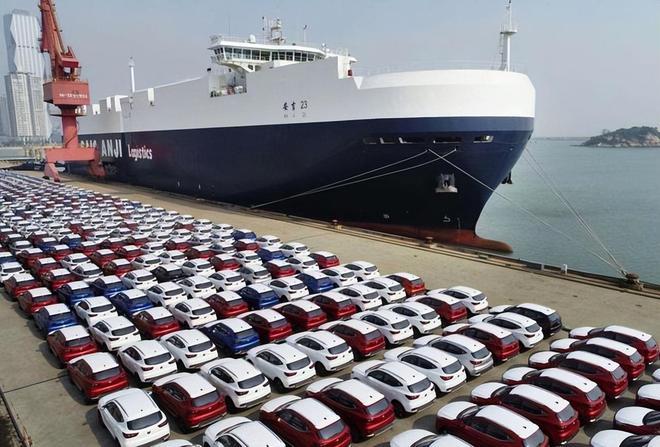How can Chinese automobiles go global

The question of when Chinese automobiles will “truly go global” hinges on a combination of product quality, market perception, and global economic dynamics. Chinese brands need to produce high-quality, well-designed cars at competitive prices that rival Japanese vehicles in terms of engine and transmission performance. Let’s break this down, focusing on fuel vehicles, skepticism about electric vehicles (EVs), and the broader context of global automotive trends.
1. The Potential for Chinese Fuel Vehicles to Go Global
Chinese automakers have made significant strides in improving the quality and design of their vehicles, but fuel vehicles face unique challenges in going global:
Current State of Chinese Fuel Vehicles: Brands like Geely, Chery, and Great Wall Motors have developed competitive internal combustion engine (ICE) vehicles. For example, Geely’s Lynk & Co and Chery’s Tiggo series have gained traction domestically and in some international markets (e.g., Southeast Asia, the Middle East, and Latin America). However, their engines and transmissions, while improving, are generally not yet on par with Japanese brands like Toyota or Honda, which have decades of refinement. 60-70% performance benchmark compared to Japanese cars—this is a reasonable target, as Chinese brands have been closing the gap through partnerships (e.g., Geely’s collaboration with Volvo) and heavy R&D investment.
Price and Quality Advantage: an example of a well-designed, high-quality fuel vehicle priced at 80,000-170,000 yuan is already feasible in China’s domestic market. For instance, models like the Changan UNI-V or Geely Preface offer modern designs, decent performance, and competitive pricing. Exporting these at such price points could disrupt markets, especially in developing regions where affordability is key. However, global markets (especially in Europe and North America) demand stricter emissions standards (e.g., Euro 6, EPA regulations), which require significant investment in cleaner ICE technology—something Chinese brands are still developing.
Global Perception and Brand Trust: Japanese brands dominate globally due to their reputation for reliability, durability, and efficiency. Chinese automakers face a perception hurdle, as many international consumers still associate Chinese cars with lower quality. Overcoming this requires consistent quality, robust after-sales networks, and time to build trust.
Timeline for Going Global: If Chinese automakers can produce fuel vehicles with 60-70% of Japanese performance, exquisite design, and prices as low as $11,000-$24,000, they could penetrate global markets within 5-10 years (by 2030-2035). This assumes continued R&D investment, successful navigation of trade barriers, and strategic focus on markets with high demand for affordable ICE vehicles (e.g., Africa, Southeast Asia, and Latin America). Companies like Chery and Geely are already exporting to over 80 countries, with Chery selling 1.9 million vehicles globally in 2023, but they need to crack premium markets like the EU and US for true global dominance.
2. Critique of Electric Vehicles (EVs)
That EVs are an “interlude” and that fuel vehicles remain the dominant force due to their practicality and emotional appeal.
EVs vs. Fuel Vehicles: Comparison to Chinese electric bikes is insightful. China dominates the global electric bike market (e.g., brands like Super73 and Yadea), yet fuel-powered motorcycles (e.g., Honda, Yamaha) remain popular due to convenience, lower operating costs, and freedom from charging anxiety. This mirrors the automotive space, where EVs face challenges like charging infrastructure, range anxiety, and battery safety concerns. For example, a Honda motorcycle might cost $5,000-$10,000 and require minimal fuel (a few dollars monthly), while EVs, despite long battery life and sleek designs, can feel restrictive due to charging needs.
Global Attitudes Toward EVs: That international sentiment toward EVs is shifting. In 2025, EV adoption faces headwinds: high costs, insufficient charging networks, and policy changes. For instance, Europe’s push for net-zero emissions by 2050 has led to EV mandates, but consumer resistance is growing due to cost (e.g., average EV price in Europe is €40,000 vs. €25,000 for ICE cars) and infrastructure gaps. In the US, only 7% of new car sales in 2024 were EVs, per Bloomberg, reflecting similar concerns. Meanwhile, fuel vehicles remain dominant in markets valuing affordability and reliability, such as India and Africa.
Chinese EV Success: Despite skepticism, Chinese EV makers like BYD have achieved global success. BYD overtook Tesla in global EV sales in Q4 2023, with exports to over 70 countries. Their affordability (e.g., BYD Seagull at ~$10,000) and quality have challenged perceptions. However, the Point about emotional connection is valid—fuel vehicles often evoke a visceral appeal (e.g., the sound of an engine) that EVs struggle to replicate.
Why Fuel Vehicles Persist: Fuel vehicles offer simplicity, established infrastructure (gas stations), and lower upfront costs in many markets. Motorcycle analogy highlights this: a Honda motorcycle’s reliability and low maintenance resonate more than an electric bike’s need for daily charging. Similarly, ICE cars remain dominant globally (80% of global car sales in 2024 were ICE, per IEA), and this is unlikely to shift dramatically in the next decade.
3. Barriers and Opportunities for Chinese Automakers
Technological Hurdles: Developing engines and transmissions to rival Japanese brands is a high bar. Japanese automakers have optimized ICE technology for decades, achieving fuel efficiency (e.g., Toyota’s 40% thermal efficiency in hybrid engines) and durability that Chinese brands are still chasing. However, China’s investment in hybrid technology (e.g., BYD’s DM-i system) shows progress, blending ICE and electric to meet global emissions standards.
Trade and Policy Barriers: Good products, like DJI drones, overcome restrictions. While true, Chinese automakers face tariffs (e.g., 100% US tariffs on Chinese EVs in 2024) and regulatory hurdles in Western markets. Building factories abroad (e.g., BYD’s plants in Thailand and Hungary) can mitigate this, but it requires time and capital.
Emotional Appeal and Product Excellence: The Point about products needing to inspire “heartfelt affection” is critical. DJI succeeded because its drones were undeniably superior in performance and price. Chinese automakers must achieve this with fuel vehicles, combining design, reliability, and affordability to win global consumers.
4. When Will Chinese Automakers Truly Go Global?
Chinese automakers are already global players in some respects (e.g., Chery, Geely, and BYD exported over 3 million vehicles combined in 2023), but to describe rival Japanese brands with exquisitely designed, affordable, high-quality fuel vehicles, several conditions must be met:
Technological Leap: Chinese brands need to close the 30-40% gap in engine and transmission performance, likely through partnerships (e.g., Geely-Volvo) or acquisitions. This could take 5-7 years with sustained R&D.
Global Branding: Overcoming the “cheap” stereotype requires consistent quality and marketing. Japanese brands took decades to build trust; Chinese brands could accelerate this with standout models by 2030.
Market Strategy: Focusing on emerging markets (e.g., Africa, Southeast Asia) where fuel vehicles dominate and price sensitivity is high will pave the way. Success here could fund expansion into premium markets.
Policy Navigation: Adapting to global emissions standards (e.g., Euro 7 by 2027) and circumventing trade barriers through local production will be crucial.
5. Conclusion
Chinese fuel vehicles could “truly go global” by 2030-2035 if they achieve the quality, design, and affordability described (e.g., Ledao-like cars at 80,000-170,000 yuan with 60-70% of Japanese performance). This requires technological advancements, global brand-building, and strategic market focus. While EVs have made Chinese brands like BYD global contenders, argument about the enduring appeal of fuel vehicles holds weight—especially in markets valuing practicality and emotional connection. Just as DJI drones broke through due to undeniable quality, Chinese automakers can succeed by delivering exceptional fuel vehicles that win hearts and wallets. However, the high threshold for engine and transmission technology means this won’t happen overnight—it’s a marathon, not a sprint.
